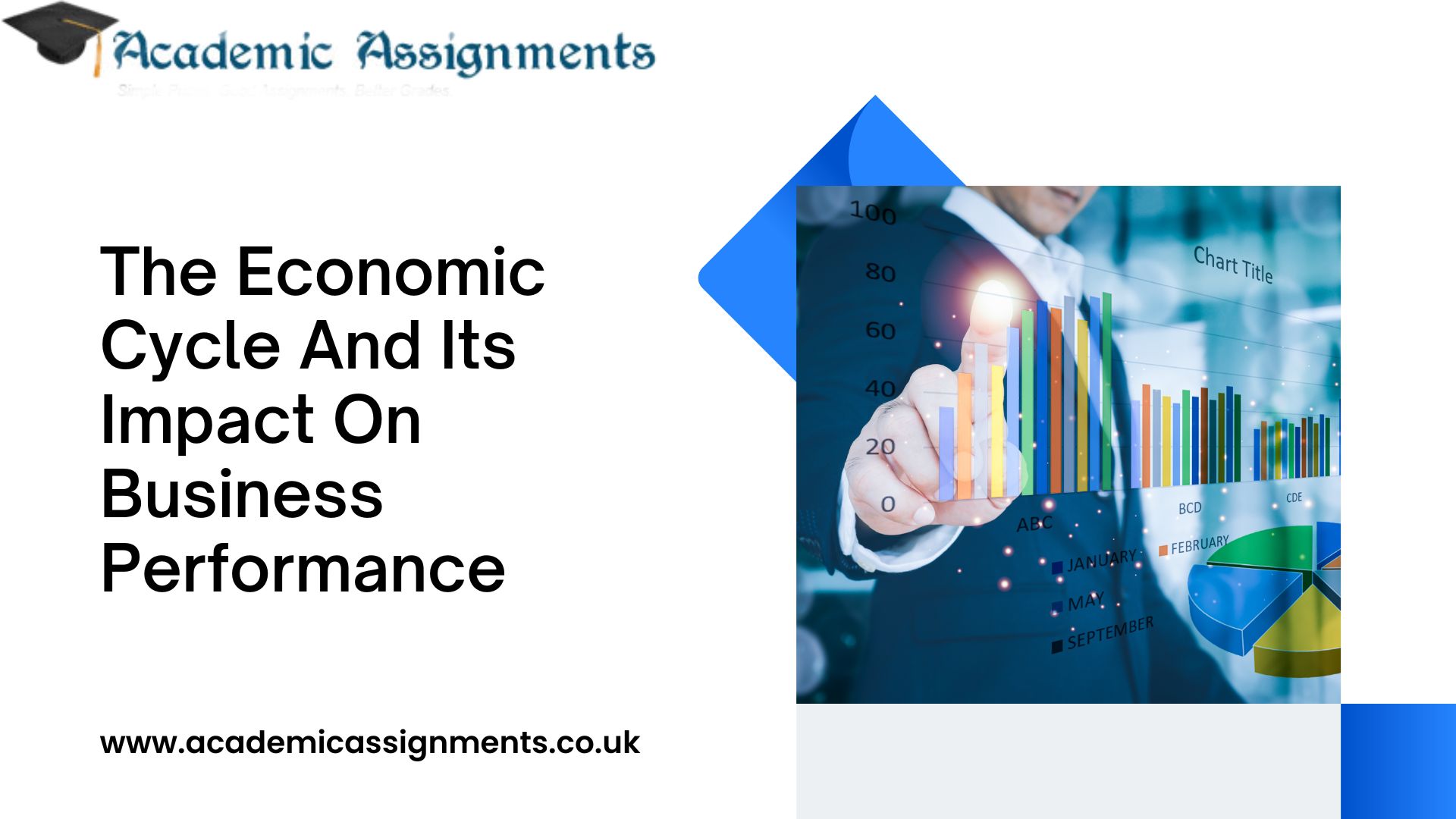Understanding the economic cycle and its impact on business performance
What Is the Economic Cycle?
A business cycle, also known as an economic cycle, is the oscillation of economic activity between periods of expansion and contraction. Interest rates, GDP, job levels, and consumer spending are a few examples of variables that can affect the economic cycle at this point.
Comprehending the prevailing economic phase aids investors and businesses in making informed decisions regarding investment timing, whether to commit funds or withdraw them. Each cycle affects stock and bond markets and company profits and earnings, making it crucial to gauge the economic cycle for strategic financial planning.
Stages of the Economic Cycle
An economy’s cyclical pattern as it shifts between expansionary and contractionary phases is referred to as an economic cycle. It entails the continuous transition from economic growth–characterised by expansion–to contraction–characterised by recession–a protracted period of decreased economic activity spanning several months. Typically, the business cycle or economic cycle is divided into four main segments.
- Expansion
In the expansion phase, which is characterised by low interest rates and increased production, the economy experiences noticeable growth. During this phase, a number of economic growth measures, including employment, wages, corporate profits, output, aggregate demand, and the accessibility of goods and services, often show persistent upward trends. The economy’s overall cash flow is still strong, and borrowing costs are often modest. It is vital to keep in mind that the inflationary phase may also occur from the expansion of the money supply, which happens when the economy is expanding.
- Peak
The peak of an economic cycle refers to the point at which growth reaches its highest rate. During this phase, prices and economic indicators stabilise momentarily before declining. The peak of growth often brings about certain economic imbalances that require correction. Consequently, businesses begin to reassess their budgets and expenditures when they perceive that the economic cycle has peaked.
- Contraction
When economic growth slows, prices remain unchanged and employment declines, this is known as a correction. Businesses may need to modify production levels as demand declines, which could lead to oversaturated markets with excess supply and a subsequent drop in price. If the economy continues to collapse, a recession could develop, which could then result in depression.
- Trough
When the economy hits its lowest point, the economic cycle trough is reached, showing that supply and demand have collapsed before the recovery phase. The economy will have difficulties at this cycle’s low point, which is marked by the negative impacts of stagnant expenditure and income. The trough, however, also offers a chance for people and organisations to review and modify their financial positions in anticipation of the coming recovery.
Measuring Economic Cycles
Key metrics are needed to assess the economy’s present and future trajectory. The official organisation in charge of determining the dates of US economic cycles is the NBER. The NBER determines how long economic cycles last from trough to trough or peak to peak by looking at GDP movements.
Since the 1950s, the length of the U.S. economic cycle has generally been around five and a half years. There is, however, a wide range in cycle length, from the peak-to-peak cycle from 1981 to 1982, which lasted only 18 months, to the growth that started in 2009. The NBER found that there were two peaks between 2019 and 2020. The first peak occurred in the fourth quarter of 2019, indicating a peak in quarterly economic activity. The second peak occurred in February 2020, identified as a monthly peak.
The significant variability in cycle length challenges the notion that economic cycles follow a regular and predictable pattern akin to natural physical waves or pendulum swings. The elements that affect cycle length and the root issues that lead to economic cycles are both topics of continuous discussion.
Managing Economic Cycles
Governments, financial institutions, and investors employ various tactics to manage the trajectory and impacts of economic cycles. Governments may use deficit spending and expansionary fiscal policies during recessions to boost the economy. As an alternative, they might choose contractionary fiscal policies that entail raising taxes and running budget surpluses to cut back on overall expenditure and keep the economy from overheating during expansionary periods.
Monetary policy is a tool that central banks use to navigate economic cycles. Central banks can cut interest rates and enact expansionary monetary policies to promote consumption and investment during downturns. Alternatively, they may implement contractionary monetary measures in periods of economic expansion by raising interest rates and restricting credit availability.
When the economy is expanding, investors often identify potential opportunities in sectors such as technology, capital goods, and energy. Conversely, during economic downturns, they may shift their focus towards investments in sectors like utilities, consumer staples, and healthcare, which have demonstrated resilience in challenging times.
Businesses that actively track their business cycle performance can strategically plan to safeguard themselves during imminent downturns and position themselves to take advantage of possibilities during economic booms. For instance, it could be wise to avoid expansion and instead concentrate on creating cash reserves to weather the slump efficiently if a business notices indicators of an upcoming recession that are consistent with general economic conditions.
Economic Theory
The monetary theory states that restricting the rate of expansion of the money supply will stabilise it. It establishes a connection between the business cycle and the credit cycle, demonstrating how shifts in interest rates affect economic activity by altering the cost of borrowing for individuals, corporations, and the government.
From the Keynesian viewpoint, it is argued that economic cycles are primarily driven by shifts in overall demand, which are influenced by inherent instability and fluctuations in investment demand. A self-reinforcing economic downturn can occur when corporate sentiment turns gloomy and investment slows down. Businesses fire employees as a result of lower demand brought on by decreased spending. According to Keynesians, unemployment results in lower consumer spending, further deteriorating the economy. In their view, government intervention and economic stimulus are necessary to address this situation, as otherwise, there is no clear solution.
What Are the Stages of an Economic Cycle?
An economic cycle, often known as a business cycle, has four main phases: expansion, peak, contraction, and trough. Although these cycles can vary, they have lasted approximately five and a half years on average in the United States since 1950.
The gross domestic product (GDP), consumer spending, interest rates, and inflation are only a few of the variables that can be used as markers to determine the cycle’s many stages. The NBER (National Bureau of Economic Research) is a well-known expert in estimating the duration and features of economic cycles.
What Affects the Economic Cycle’s Phases?
During the expansion phase, the economy undergoes a period of growth that spans at least two consecutive quarters. Lower interest rates, increased employment rates, and improved consumer confidence mark this phase. The peak phase represents the culmination of the expansion, where the economy achieves its highest level of productivity. Following the peak, there is a transition into the contractionary phase, during which employment numbers and housing activity decline. The trough in the business cycle is marked by elevated unemployment rates, constrained credit availability, and declining prices.
What Causes an Economic Cycle?
There is a great deal of disagreement among the major schools of economic thought over what creates an economic cycle. For example, monetarists link the credit cycle, in which interest rates, which affect the cost of borrowing, have a big impact on consumer spending and overall economic activity. In contrast, the Keynesian viewpoint contends that investment demand volatility, which also has an impact on spending habits and employment levels, is what drives the economic cycle.
The Bottom Line
The phrase “economic cycle” refers to the cyclical pattern of the economy that includes the periods of expansion, peak, contraction, and trough. The expansion phase goes on until it reaches a peak, at which point it enters a contraction phase. Eventually, it hits a trough, and the expansion phase begins again. The economic cycle is defined by indicators like GDP, interest rates, job levels, and consumer expenditure. Various economic theories describe the factors that cause the economic cycle, but the circumstances that surround each stage can have a big impact on how businesses and investors choose to invest their money.
Author Bio:
Mark Edmonds is a highly knowledgeable and experienced academic professional working at Academic Assignments, a leading platform offering comprehensive assignment help across various subjects. With his expertise and passion for economics, Mark specialises in providing students with top-quality economics assignment help. With a strong background in the field, Mark possesses an in-depth understanding of the economic cycle and its profound influence on business performance. Through his extensive research and practical experience, he is dedicated to assisting students in grasping the complexities of economics and excelling in their academic endeavours. With his commitment to delivering the best possible assistance, Mark has become a trusted resource for students seeking reliable guidance and support in economics assignments.

 Blogs
Blogs





